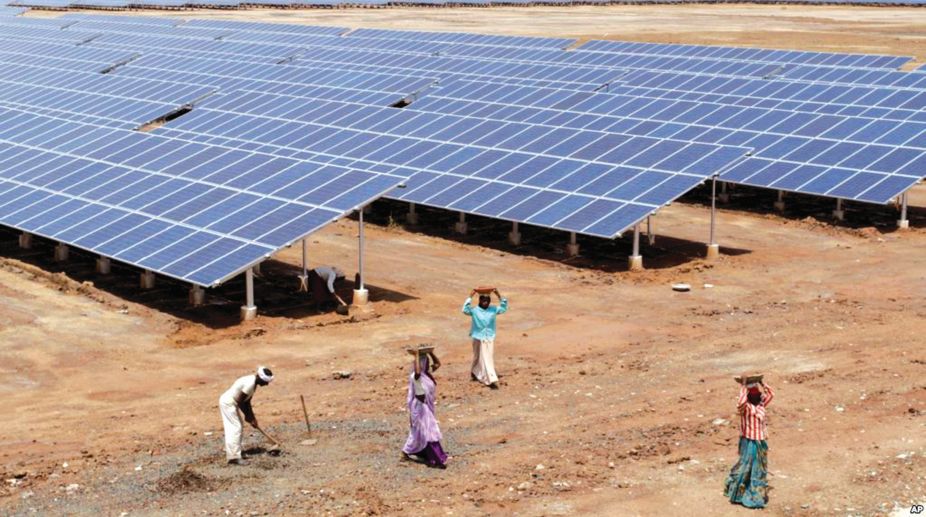The government recently announced that all Indian villages have been electrified. While it seems clear that not all households in these villages have power, it has been internationally acknowledged that India has faced an arduous struggle towards achieving 100 per cent electrification.
According to the International Energy Agency (IEA), India is a success story in electrification, having provided energy access to over 500 million people since 2000.
In its latest report, prepared in collaboration with the International Renewable Energy Agency (IRENA), United Nations Statistics Division (UNSD), World Bank and World Health Organization (WHO), IEA details the world’s progress on energy targets. It noted that countries are steadily meeting targets set for 2030, to fulfil their sustainable development goals.
The report observes that Asia is projected to reach a 99 per cent rate of electrification in 2030. Hailing India as the regional leader, the report highlights the annual improvement in access to clean cooking fuel in Central and Southern Asia.
Such expansion of access to clean cooking among the poor has been attributed to the subsidization of LPG stoves, offering refills for women living below the poverty line through the Pradhan Mantri Ujjwala Yojana (PMUY program).
Prior to this report, the IEA credited India with being a major driving force in global energy trends through its modern fuels and technologies. The developing countries in Asia account for two-thirds of global energy growth, and the largest contribution to demand growth – almost 30 per cent – comes from India.
India is presently in a strong position to meet the rising global demand for refined petroleum products. It is undisputed that India’s energy consumption will only increase over the years amid urbanisation and economic growth.
Using this steady growth to boost opportunities as well as to increase energy security, India is forging diplomatic ties with its neighbours by entering into energy cooperation agreements. The consequence of these alliances is to restrict China’s role in the South Asian energy market.
Earlier this year, India’s biggest importer of gas – Petronet LNG Ltd, and its Japanese partners, jointly invested $300 million to set up Sri Lanka’s first LNG terminal near Colombo.
The Indo-Japan collaboration follows successive Chinese investments in Sri Lanka, including the $1.4 billion Colombo Port City project and China’s help in expanding the Hambantota port and the Mattala airport. Evidently, this collaboration between India and Japan is meant to offset China’s growing influence in Sri Lanka.
In Bangladesh, giants such as the Reliance, Adani Group and NTPC have concluded investment proposals cumulatively worth $9 billion to supply electricity and enhance power generation. Preliminary agreements were also signed between PetroBangla and Petronet LNG, to construct an LNG terminal at Kutubdia Island.
Other notable agreements include those between Numaligarh Refinery Limited and Bangladesh Petroleum Corporation (BPC) for the sale and purchase of diesel, and between BPC and Indian Oil Corporation Limited (IOCL) to establish LPG terminals in Chittagong.
For supplying fuel to India’s land-locked neighbour, Nepal, South Asia’s first transnational petroleum pipeline has been projected. The 69-km pipeline from Motihari in Bihar to Amlekhganj in Nepal aims to deliver 2 million tonnes per annum of petroleum products to Nepal, at a cost of Rs 200 crore.
While the two neighbours have been developing this relationship, tensions have arisen because Nepal has been fostering links with China. Nepal has secured a deal for China to supply it with fuel. Nepal seeks to deepen ties with Beijing and reduce its reliance on India.
Farther south, Mauritius has the potential for petroleum storage and bunkering. As one of India’s closest partners in the Indian Ocean, Mauritius is receiving support from India to build their infrastructure.
India already supplies petroleum products to Mauritius. With its development as a petroleum hub, Mauritius can ensure its energy security, while India can derive marketing benefits out of it for expansion into Africa.
On the other side of the Indian Ocean, India and Indonesia are cultivating an energy relationship. To help Indonesia achieve self-sufficiency in energy, India is building floating storage and regasification units (FSRU).
India stands to gain a supply of LNG kits for Indian transport vehicles from Indonesia. It is evident that India is capitalizing energy resources in the global South, as well as improving the lives of its own citizens.
The writers are, respectively, a professor of law at Jindal Global University, Sonipat and a student at the National University for Juridical Sciences, Kolkata.










